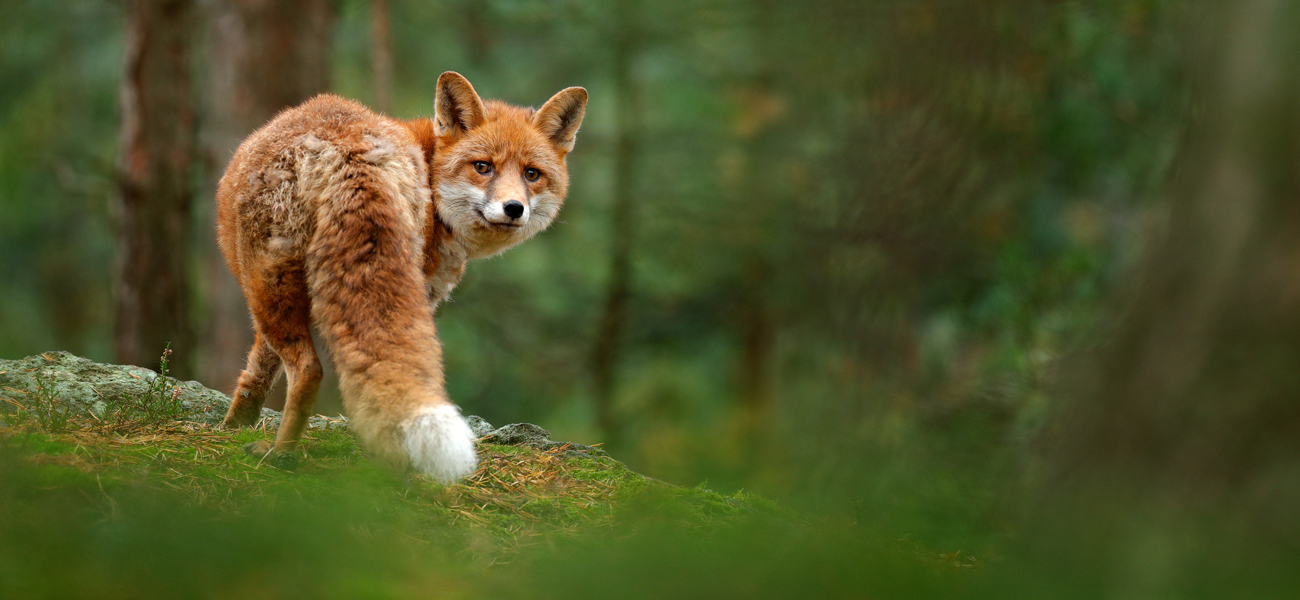
What to do if you see wild animals in your yard
That snake you spotted sunning on your patio—the one you’re eager to get rid of—is likely doing more good than harm in your backyard. And that fox you eyed in the woods behind your home? Research scientists would love for you to snap a picture or video.
Even in urban areas, wildlife sometimes still makes its presence known. Experts can help in situations that merit removal of nuisance animals. And in benign cases, wildlife advocates are there to help you learn more about coexisting safely. Here’s our guide for knowing what to do.
|
|
 Foxes
Foxes
Numerous sightings of foxes have been documented around Baton Rouge over the last several years, and a few groups have formed to both rehabilitate the animals and document their whereabouts. Foxes don’t tend to be aggressive, but if you see one, don’t feed or touch it. And no matter how cute it is, don’t consider bringing it home for a pet. Raising a wild animal is illegal in Louisiana. The Canid Project is a multimedia effort that helps rehab foxes. Find it at thecanidproject.com. LSU researcher Linda Hooper-Bui documents local fox sightings as part of a research project.
Upload photos and video to the Facebook page “Fox Finders.”
 Snakes
Snakes
The vast majority of Louisiana’s native snakes are nonvenomous, and they do things most of us would appreciate, like eat rodents. Herpetologists encourage the public to learn more about snakes so they’ll be inclined to let nonvenomous ones go about their business. BREC’s Bluebonnet Swamp, where you can spot nonvenomous species along the trail and in the interpretive center, is a great place to get educated about snakes. If you do come across a nuisance venomous snake, contact the Department of Wildlife and Fisheries. brec.org and wlf.louisiana.gov
 Raccoons and opossums
Raccoons and opossums
Both primarily nocturnal, these neighborhood dwellers often come out when it’s dark and quiet to scrounge through garbage and pet food. So be sure to secure these items, especially before you turn in for the night. Raccoons and opossums are also inclined to kill backyard chickens and eat their eggs. Chicken enclosures should be secured on all sides, and from the bottom, so that these clever creatures won’t circumvent security. To get rid of nuisance animals, contact East Baton Rouge Parish Animal Control through brla.gov, or reach out to one of the several pest control agencies in the region. If you want the removal to be humane, contact the national organization Humane Wildlife Removal, which compiles local resources on its website, humaneraccoonremoval.org. Animal Control will also rent out humane box traps along with detailed instructions on how to set and bait it. Once an animal is captured, you can call Animal Control to retrieve it.
 Alligators
Alligators
Alligators are synonymous with Louisiana, and occasionally, one is spotted in a densely populated area. The Louisiana Department of Wildlife and Fisheries partners with approved nuisance alligator hunters to get rid of such animals. Just because you spot an alligator doesn’t mean it’s a nuisance. Only alligators more than 4 feet in length that present a threat to pets, livestock or humans are considered a nuisance. Contact Wildlife and Fisheries at wlf.louisiana.gov.
ADDITIONAL RESOURCES
Other nuisance wildlife removal
Other nuisance animals, such as bats, squirrels, armadillos and others, can be removed by one of Wildlife and Fisheries’ assigned wildlife control operators. Find one in your area through the wlf.louisiana.gov website.
Injured wildlife
If you come across an injured wild animal, contact a trained and permitted wildlife rehabilitator. Wildlife and Fisheries maintains a list of approved individuals by parish. Injured wildlife can also be brought to the LSU School of Veterinary Medicine veterinary hospital. Find the hospital through lsu.edu.
BEAR in mind
Residents in West Baton Rouge Parish had two close encounters with black bears this spring. One was spotted multiple times in the Port Allen area before it was euthanized in late April for coming too close to populated areas and scrounging for food in garbage cans, according to news reports. The second incident happened in early May when a driver traveling east on I-10 in West Baton Rouge Parish struck a black bear crossing the interstate. Black bears are common in rural areas of the state and are most likely to be encountered on roadways, according to Wildlife and Fisheries. Check out bearwise.org for tips on what to do to protect yourself and your property from wandering bears.
This article was originally published in the June 2021 issue of 225 magazine.
|
|
|
